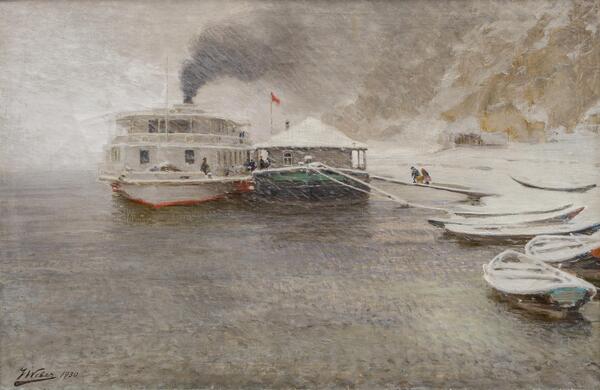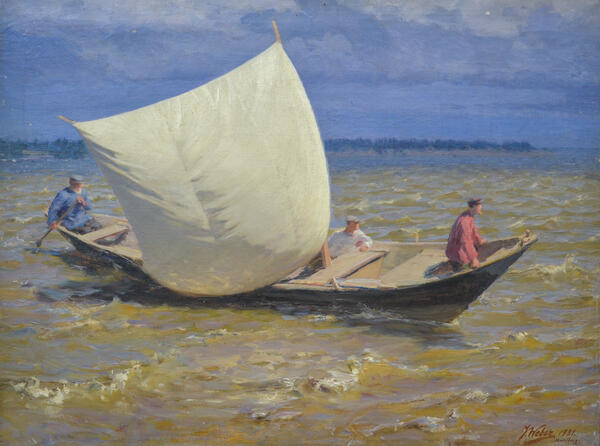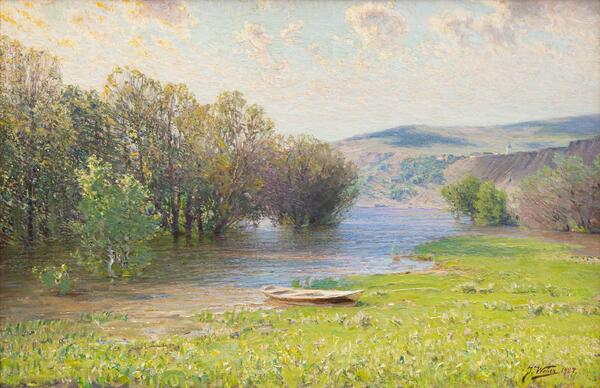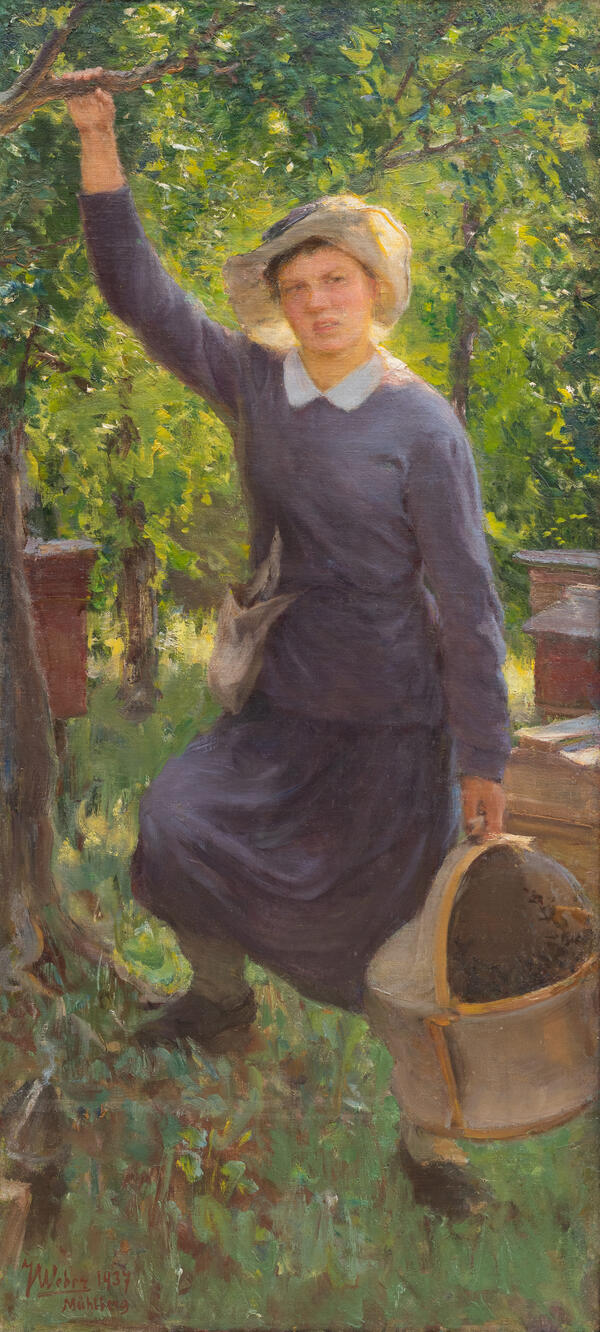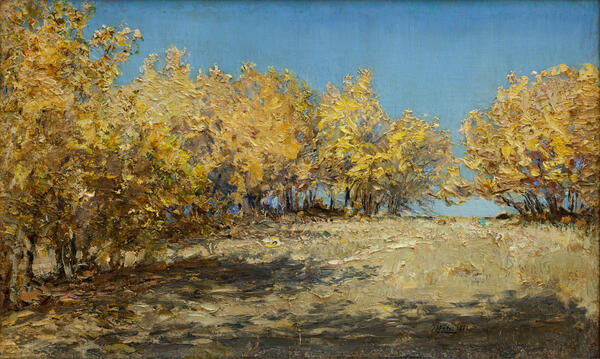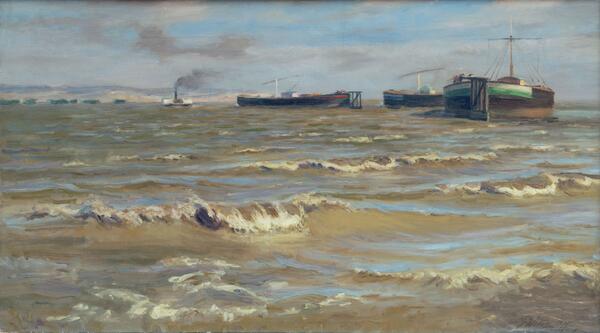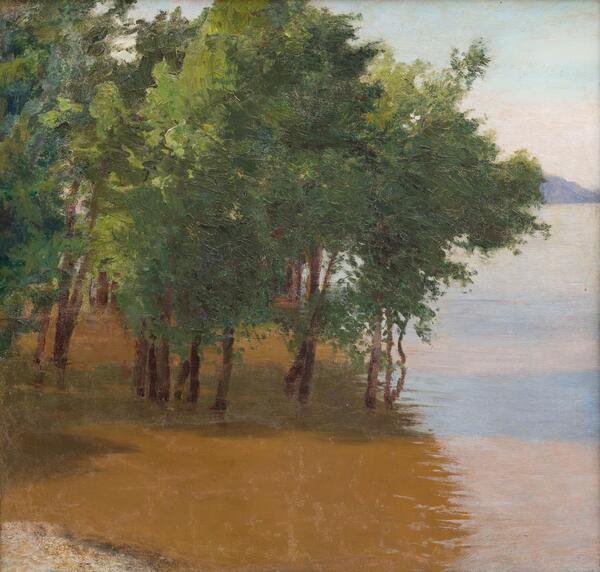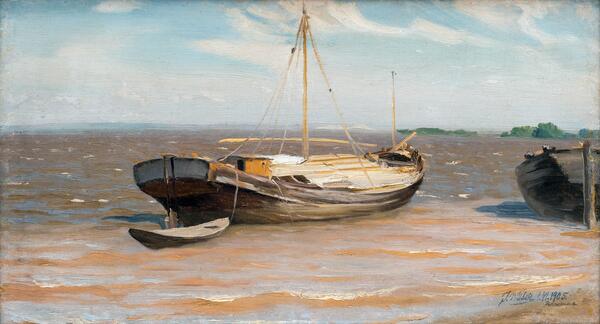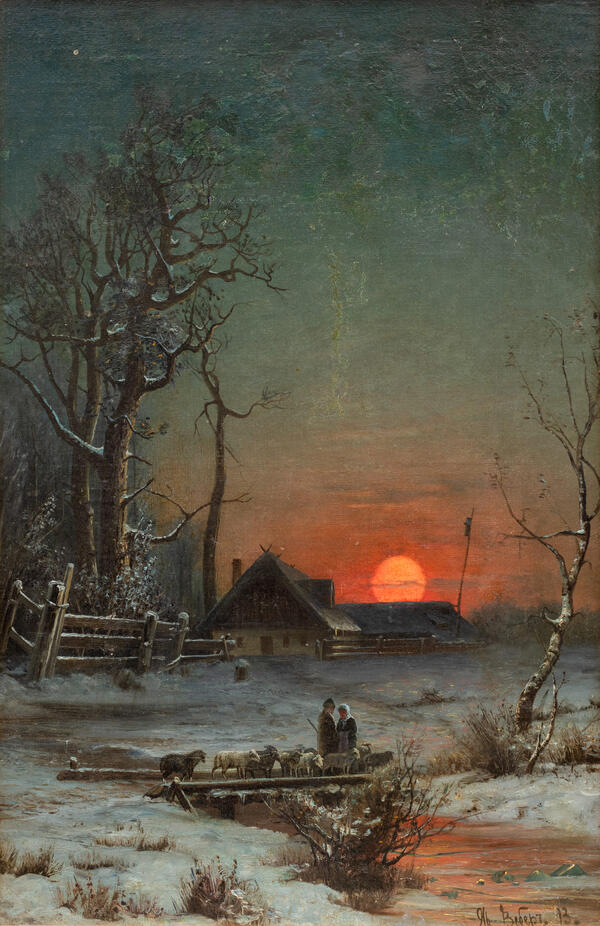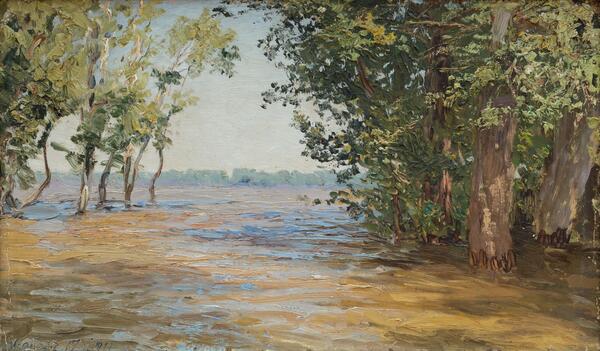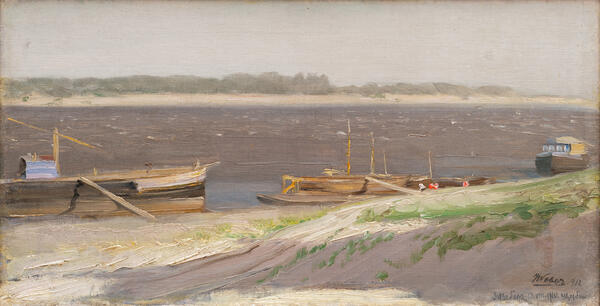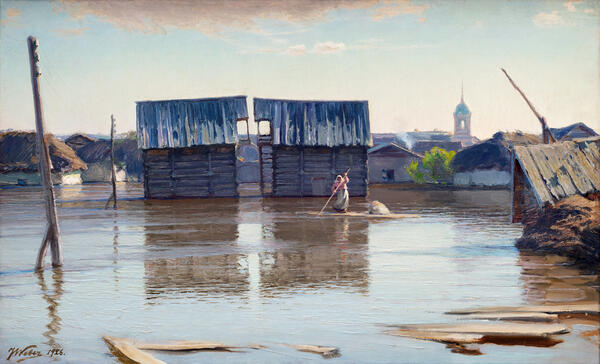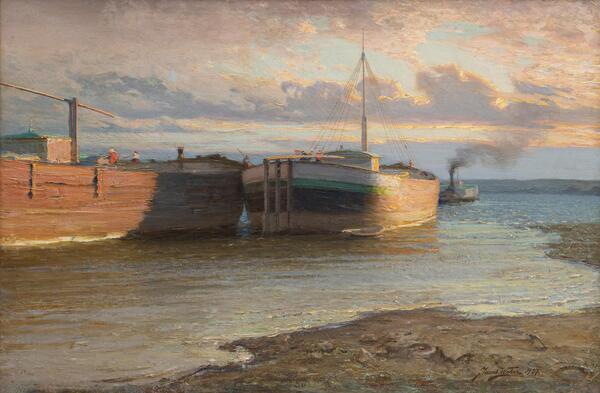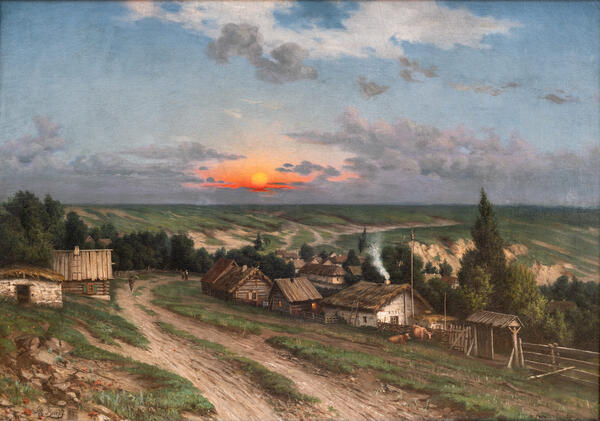The exhibition of the Engels Museum of Local Lore includes the painting “Belyana on the Volga” by Yakov Yakovlevich Weber, cherished by the artist himself who considered it one of his undoubted artistic accomplishments.
A belyana was a wooden flat-bottomed boat used for rafting timber down rivers in the 19th and early 20th centuries. Belyanas were used mainly in Russia for rafting on the Volga and Kama rivers. These vessels were 100 meters long, 25 meters wide and 5 meters high. Their cargo capacity was up to 10 tons. They were built only for one trip downstream. Thus, from the upper reaches of the Volga, the timber was delivered to Saratov, Kamyshin, Tsaritsyn and other cities, where the wood that dried during the rafting, together with the belyana itself, was dismantled for firewood or for further processing at sawmills. Up to 500 belyanas were rafted down the Volga during a season, and therefore these unusual vessels eventually became a familiar part of the summer Volga landscape.
The artist deliberately uses a low horizon line in
the painting “Belyana on the Volga”, which adds a special grand and panoramic
character to the image. The perspective from which Weber depicts the giant
belyana boat is also remarkable: the viewers do not look at it from the shore,
but rather as if they were floating on the water, which makes the impressive
size of the unusual vessel even more distinctly visible. This picture is also
interesting from a historical point of view: Yakov Weber depicts the belyana
quite accurately. It is a log two-deck vessel with a visible bow and a long
rudder, with two houses at the top (on the sides) united by an arch (bridge)
with three cupola turrets. At the side of the lower deck and on the upper deck
there are figures of people. On the left, a small boat with people is
approaching the belyana. On the right, a flat-bottomed boat is tied to the
board. However, despite all the realism of the image, Weber managed to convey
the beauty of the Volga nature, capturing the moment. Most of the canvas is
occupied by the water surface, which reflects the cloudy sky; in the distance,
there is a low cliff and a thin line of the opposite shore, almost merging with
the horizon line.




